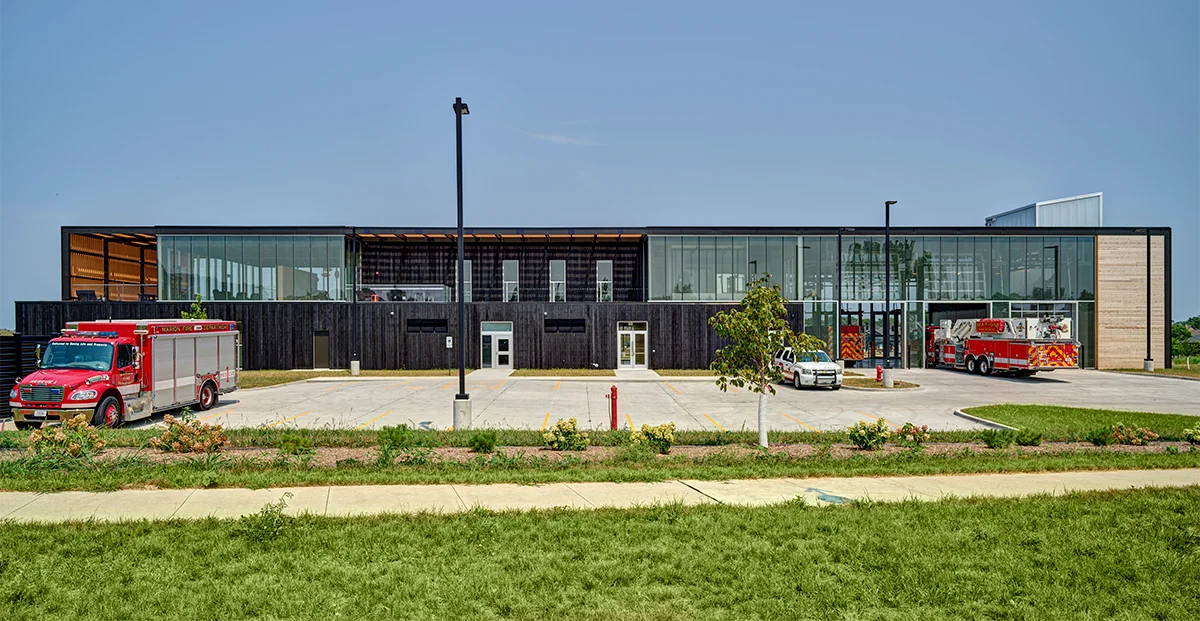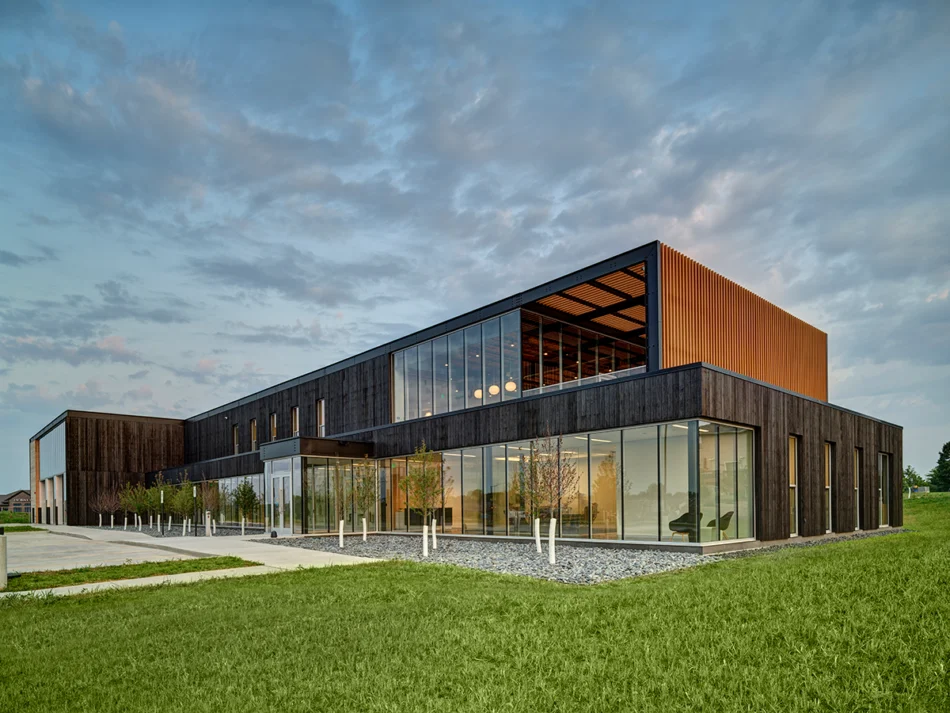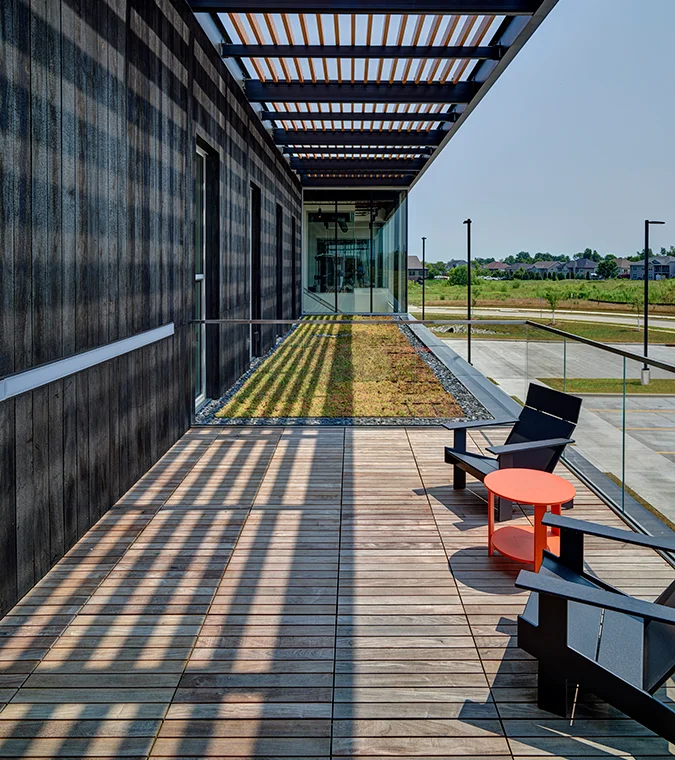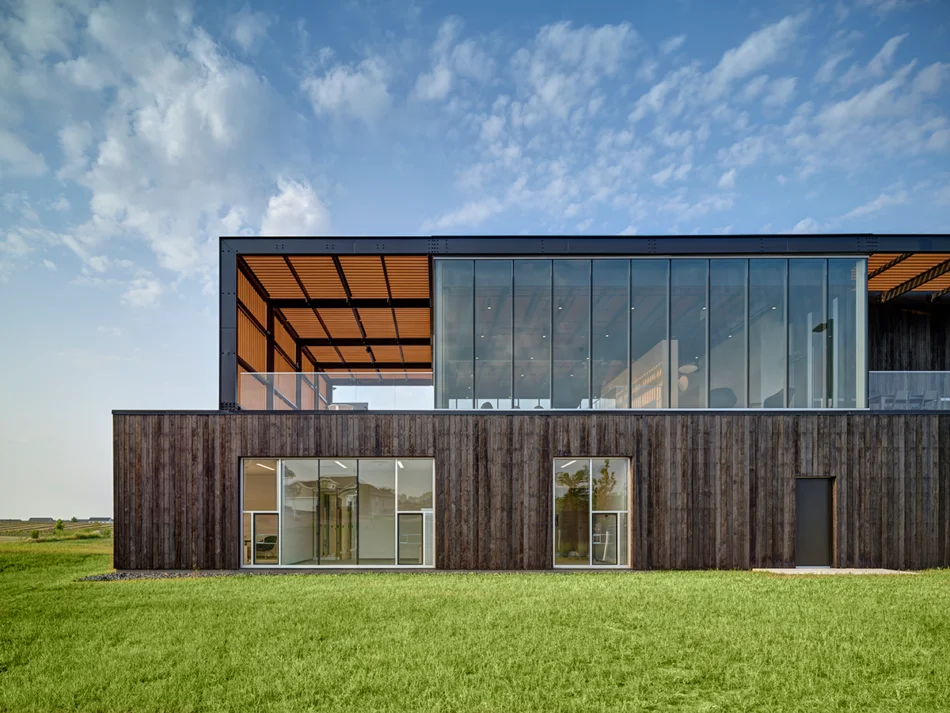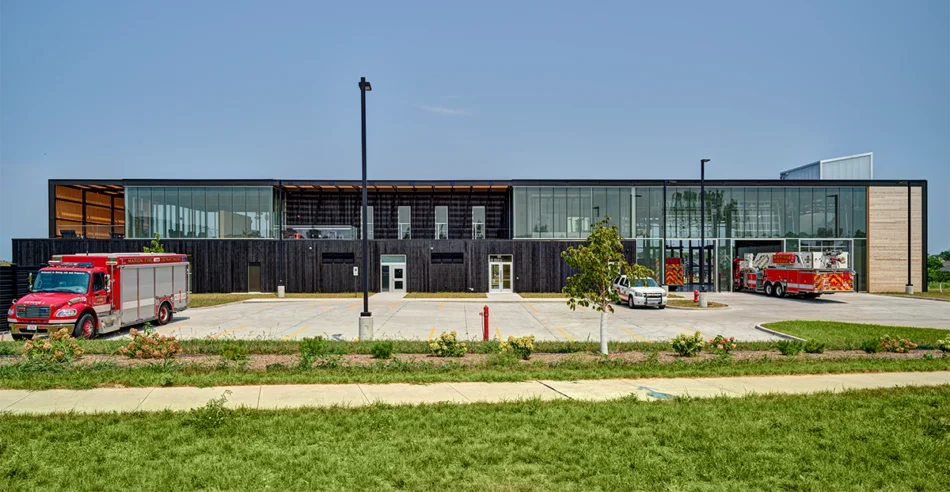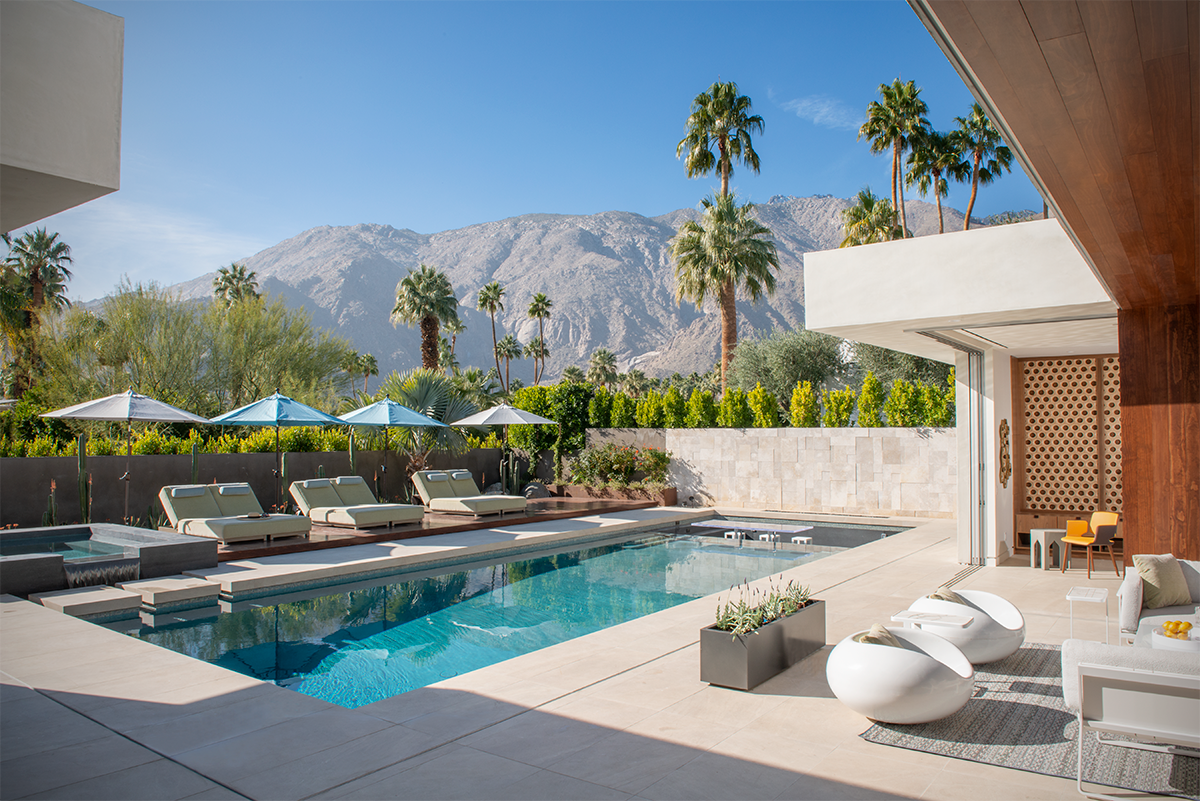A Paradigm of Community, Wellness, and Biophilic Design
In the midst of a rapidly expanding community, the Accoya Iowa Fire Station stands as an architectural marvel, seamlessly blending functionality, aesthetics, and a profound connection to nature. This extraordinary facility not only reduces response time and establishes a strong civic presence but also places a strong emphasis on the well-being of firefighters. With the innovative use of Accoya wood and the ancient Japanese technique of Shou sugi ban, this fire station exemplifies the power of sustainable materials and captivating design.
Applications used in this project: Siding
Siding
Biophilic Design for Firefighters’ Wellness
Recognizing the demanding nature of firefighting, the Fire Station employs biophilic design principles, which actively integrate natural elements into the building environment. This intentional incorporation of nature seeks to enhance the physical and mental well-being of the firefighters. After facing the challenges of a distressing call, the natural elements within the building offer solace and rejuvenation. By prioritizing the wellness of its firefighters, the Iowa Fire Station acknowledges the importance of mental resilience in a profession that requires strength and compassion.
Credits
Architect:
OPN Architects — David Sorg, principal in charge; Landon Burg, project architect; Tate Walker, sustainability director; Mindy Sorg and Erica Steapp, interior designers
Engineers:
Hall & Hall Engineers (civil); M2B Structural Engineers (structural); Design Engineers (m/e/p)
General Contractor:
CCI Group
Supplier:
Delta Millworks
Photography:
Cameron Campbell
Shou Sugi Ban Wood: Aesthetic Brilliance and Serene Ambiance
One of the standout features of the Fire Station is the clever use of Shou sugi ban wood. This ancient Japanese technique involves charring the surface of wood, resulting in a strikingly beautiful texture and depth. The use of this technique in the living and office spaces creates an ambiance that is both warm and inviting, contrasting elegantly with the smooth planes of glass that dominate the station’s exterior. The Shou sugi ban wood adds an organic touch, reinforcing the biophilic design approach and creating an environment that is harmonious with nature.
A Union of Nature and Architecture
The Accoya Iowa Fire Station stands as a remarkable example of a firefighting facility that goes beyond mere functionality. Its commitment to reducing response time, establishing a transparent civic presence, and promoting the physical and mental wellness of firefighters through biophilic design principles is truly commendable.
With the integration of Shou sugi ban wood, the station captures the essence of nature, adding depth and texture to its living and office spaces. This extraordinary combination of features sets a new standard for fire station design, proving that a holistic approach to architecture can profoundly impact the well-being of those who protect and serve our communities.
![]() Siding
Siding 